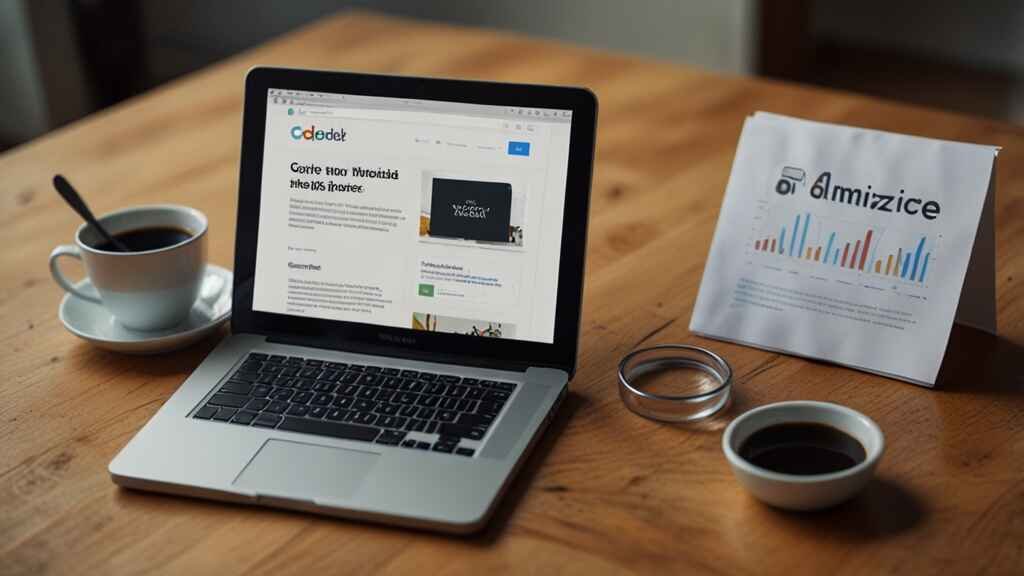In today’s world of digitization, having a good website alone does not cut it anymore. Your website needs to be search engine optimized to attain visibility, catch the right audience, and drive conversions. SEO makes sure your website stands out first in the search engines-Google, Bing, and Yahoo. We look at different strategies you could use to Optimize Website for search engines from keyword research through to technical SEO, right to content strategies. IT
Table of Contents:
- Understanding SEO Basics
- Keyword Research and Targeting
- On-Page SEO Optimization
- Technical SEO: The Backbone of Website Performance
- Mobile SEO Optimize Website
- Off-Page SEO: Building Authority
- Content Marketing and SEO
- Local SEO Optimize Website
- Measuring SEO Success with Analytics
- SEO Trends in 2024 and Beyond
- Conclusion

1. Understanding SEO Basics
SEO stands for Search Engine Optimization, and by definition, it’s the process by which your Optimize Website is enhanced in ways to increase visibility when people search using terms related to your products, services, or other information contained on your Optimize Website. The higher your pages are ranked in search results, the more attention and traffic you’ll gain.
SEO can be divided into three primary categories:
- On-Page SEO: The Optimize Website done on individual pages in order to have higher rankings and attract targeted traffic.
- Off-Page SEO: Refers to other external factors, such as backlinks that add to the ranking of your website.
- Technical SEO: This refers to the optimization of the architecture of your site, where you ensure that your website meets the standards set by the search engines.
2. Keyword Research and Targeting
Why Keywords Matter
SEO Fundamentals: Keywords Keywords are the backbone of SEO. They are what users type in to a search engine in hopes of finding what they’re looking for. With the proper keywords, you will drive relevant traffic to your website.IT
Conducting Keyword Research
- Brainstorm Seed Keywords: The major themes related to your business. For instance, an online bookstore would seed with keywords like “buy books online” or “best fiction novels.”
- Use Keyword Tools: Utilize tools like Google Keyword Planner, Ahrefs, or SEMrush to find out related keywords and estimate the volume of search along with the level of competition.
- Analyze Competitor Keywords: Check which keywords your competitors rank for and how you can outrank them.
Types of Keywords to Target Optimize Website
- Short-tail keywords: These keywords are generic and highly competitive; for instance, “books”.
- Long-tail keywords: These keywords are more specific, usually less competitive than the head terms, such as “buy classic novels online”.
- LSI (Latent Semantic Indexing) keywords: These are semantically related to the primary keyword; for example, “literary fiction” can apply in a book website.
Keyword Intent
Understanding the intent behind a search is crucial:
- Informational: The user wants information.
- Navigational: Trying to find a particular website or webpage.
- Transactional: The user is going to buy something.
Target a mix of these keyword intents to Optimize Website for different stages of the customer journey.IT
3. On-Page SEO Optimization
On-page SEO is the process through which each page on a Optimize Website to achieve higher results in search engines. The main elements comprising on-page SEO optimization include:
Title Tags
The title tag is one of the most important on-page SEO factors that include your main keyword, being descriptive, and preferably not longer than 60 characters.
Meta Descriptions
A good meta description will help increase click-through rates from search engine results pages. Even though meta descriptions don’t help with ranking, they do affect how your site appears in the search results.
Header Tags (H1, H2, H3)
The usage of header tags is really helpful to build up the structure of your content and give more simple understanding to the search engines. Your main keyword should be in the H1 tag, while subtitles can be highlighted by H2 and H3 tags.
Content Optimization
Informational content needs to be engaging and keyword-oriented, with natural usage of the target keywords in the content, but not at the expense of keyword stuffing. Ensuring the reading is easy and offering real value to the user is a must.
Image Optimization
Images would need to be Optimize Website for speed and search engines by:
- Compressing the images to improve load time.
- Descriptive filename and alt text that contains keywords.
Internal Linking
This will help the search engine to understand your website structure, and the user will be able to navigate through easily.
URL Structure

4. Technical SEO: The Backbone of Website Performance
Technical SEO involves Optimize Website ’s infrastructure to make it easier for search engines to crawl and index your pages. Here are some critical areas of focus:
Site Speed
Site speed is a major ranking factor. Use tools like Google PageSpeed Insights to assess and improve your website’s load time. Compress images, leverage browser caching, and minimize CSS and JavaScript to speed up your site.
Mobile Optimize Website
With mobile traffic surpassing desktop, it’s crucial to have a mobile-friendly website. Use responsive design and ensure that your site works well on all devices.
XML Sitemap
An XML sitemap helps search engines find and index all of your site’s pages. Make sure your sitemap is up to date and submitted to Google Search Console.
Robots.txt
The robots.txt file tells search engines which pages or sections of your site they should or shouldn’t crawl. Make sure it’s correctly configured to avoid blocking important pages from being indexed.
Canonical Tags
Canonical tags are used to indicate the original version of a page if you have similar or duplicate content on multiple URLs. This helps prevent duplicate content issues.
Structured Data (Schema Markup)
Structured data helps search engines understand the content of your pages better. Implementing schema markup can lead to rich snippets (e.g., star ratings, prices) in search results, which can improve your click-through rate.
5. Mobile SEO
With more than half of web traffic coming from mobile devices, Optimize Website for mobile users is essential. Google uses mobile-first indexing, meaning it primarily looks at the mobile version of your site for ranking.
Mobile-Friendly Design
Your Optimize Website should be responsive, meaning it adjusts its layout according to the device being used. This ensures that your site is easy to navigate on mobile, with clear fonts, touch-friendly buttons, and minimal scrolling.
Accelerated Mobile Pages (AMP)
AMP is a framework that allows you to create mobile pages that load almost instantly. Implementing AMP can improve user experience and potentially increase your ranking in mobile search results.
6. Off-Page SEO: Building Authority
Off-page SEO refers to actions taken outside your website to improve its ranking. The most important off-page factor is backlinks—links from other websites that point to yours.
Link Building Strategies
- Content Marketing: Publish high-quality, valuable content that others want to link to.
- Guest Blogging: Write guest posts for other websites in your industry and include links back to your site.
- Influencer Outreach: Collaborate with influencers in your niche to promote your content.
- Broken Link Building: Find broken links on other websites and suggest your content as a replacement.
Social Signals
Although social media shares and likes aren’t direct ranking factors, they can help increase your content’s visibility and drive traffic, which indirectly benefits SEO.
7. Content Marketing and SEO Optimize Website
Content and SEO go hand-in-hand. High-quality content is essential for ranking well in search engines. Here are some content marketing strategies to enhance your SEO efforts:
Creating SEO-Friendly Content
- Understand Your Audience: Tailor your content to meet the needs and interests of your target audience.
- Use Keywords Strategically: Include primary and secondary keywords naturally in your content without keyword stuffing.
- Content Length: Longer, in-depth content tends to rank better, but it must still be engaging and useful.
- Use Visuals: Incorporate images, videos, infographics, and charts to make your content more engaging and easier to understand.
Evergreen Content
Evergreen content is content that remains relevant and useful over time. This type of content can continue to drive traffic long after it’s published. Examples include how-to guides, tutorials, and resource lists.
Regular Updates
Regularly update your existing content to keep it fresh and relevant. Updating old content with new information can help maintain or improve rankings.

8. Local SEO
If you operate a local business, optimizing for local search is crucial. Local SEO ensures that your business appears in location-based searches, especially on Google Maps and in the local 3-pack.
Google My Business
Creating and optimizing a Google My Business (GMB) listing is the first step in local SEO. Ensure that your GMB listing is complete, accurate, and up to date.
Local Keywords
Include local keywords in your content and meta tags, such as your city or region.
Local Backlinks
Get links from local websites, such as newspapers, community organizations, or local bloggers, to improve your local search rankings.
Reviews
Encourage satisfied customers to leave positive reviews on Google and other review platforms. Positive reviews can improve your ranking in local searches.
9. Measuring SEO Success with Analytics
Measuring and analyzing your SEO efforts is crucial for understanding what’s working and where improvements are needed.
Google Analytics
Google Analytics is an essential tool for tracking your Optimize Website ’s traffic, user behavior, and conversions. Key metrics to monitor include:
- Organic traffic: The number of visitors coming to your site from search engines.
- Bounce rate: The percentage of visitors who leave your site after viewing only one page.
- Average session duration: The amount of time visitors spend on your site.
Google Search Console
Google Search Console provides insights into how your site is performing in search results. You can track the keywords you rank for, monitor backlinks, and get alerts about any issues.
Rank Tracking Tools Optimize Website
Use tools like SEMrush or Ahrefs to track your keyword rankings over time. These tools also allow you to monitor your competitors and discover new keyword opportunities.
10. SEO Trends in 2024 and Beyond
As SEO evolves, it’s important to stay ahead of the curve. Here are some trends to watch in the coming years:
AI and Machine Learning
Google’s use of AI and machine learning, such as the RankBrain algorithm, is shaping the future of search. Understanding user intent and providing high-quality content will become even more important.
Voice Search
With the rise of voice assistants like Siri, Alexa, and Google Assistant, optimizing for voice search is crucial. Voice queries tend to be more conversational, so focus on long-tail keywords and natural language.
Video SEO
Videos are becoming a more prominent part of search results. Optimizing your video content with relevant keywords, descriptions, and transcripts can help it rank higher.
Core Web Vitals
Google’s focus on user experience means that metrics like load time, interactivity, and visual stability will play a larger role in rankings. Ensure your site meets Google’s Core Web Vitals standards.

